Teeltadvies Categories: Orchids

Developments in potworm control
Found in:19 December 2023
Since insecticides that are effective against potworm are no longer available in phalaenopsis cultivation in Holland, controlling the problem of the damage of the larvae of Lyprauta has been challenging, to say the least.

Future of crop protection Orchids
Found in:19 September 2023
The use of chemical pesticides in greenhouse farming has been closely scrutinized for some time. The number of available crop protection products has been declining for years and will decrease by another 40% between 2023-2027.
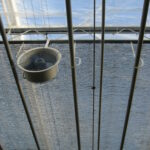
Energy savings in Phalaenopsis
Found in:30 October 2022
Currently, energy prices are extremely high and we do not know what lies ahead for the coming winter. It is absolutely essential that major energy savings are made to keep plant costs under control.
Since greenhouse climate control is an interaction between parameters such as temperature, humidity, light and irrigation, it is important to determine a strategy whereby these aspects are still balanced if energy savings are to be made in many areas.
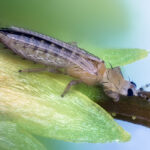
A more effective approach to thrips through proper identification
Found in:23 May 2022
Identifying thrips is difficult, because both the different thrips species and the larvae are often very similar. A diagnosis is difficult, sometimes insufficiently reliable and often takes (too) long. Then the question arose for us: ‘How can we do this faster and better?’ We started to work on this question.

Substrate Phalaenopsis
Found in:4 November 2021
‘Airy substrates’ are generally used for the cultivation of Phalaenopsis. Substrates can contain a variety of raw materials. The crop and your ultimate needs and objectives are what determine which elements and their corresponding properties are important for the substrate to be used.

Threat monitoring
Found in:6 July 2021
In the cultivation of both Anthurium and Phalaenopsis, it is important to continuously monitor the cultivation. Growers strive to keep cultivation conditions constant throughout the year. Unfortunately, they have to deal with many different external influences. Besides insects, fungi and bacteria, inaccuracies in pH/EC, nutrient composition, starting water, etc. can have a major impact on the crop.

Thrips (in general)
Found in:24 February 2021
Thrips are a growing problem in the cultivation of Anthuriums and Phalaenopsis. Whereas thrips were rare in Phalaenopsis a few years ago, they have become increasingly common in recent years. There is an increasing number of exotic thrips species, which require a specialist approach. The variety of chemical agents, on the other hand, is increasingly limited.
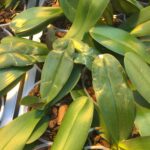
Thrips in Phalaenopsis
Found in:2 March 2021
Thrips can be divided into two groups: leaf thrips and flower thrips. The leaf thrips only live on plant juices, while the flower thrips can also live on pollen.
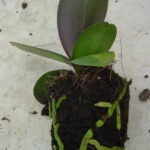
pH in Anthurium and phalaenopsis
Found in:5 November 2020
In the Anthurium and Phalaenopsis cultivation, a lot of attention is paid to acidity. The acidity, or pH value is important for the absorption of several nutritional elements.

Energy balance
Found in:13 July 2020
When it comes to plant growth, we tend to immediately think of all the biological and physiological processes that take place during the growth of the plant. The fact that plant growth is actually mostly about physics is sometimes overlooked. Growth depends to a large extent on the energy balance of the crop.
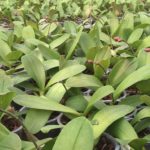
Physiological abnormalities
Found in:10 March 2020
Growers are increasingly demanding more from their crops: better quality, less labour, more yield. A prerequisite for this is optimum cultivation control. Having sufficient knowledge of how the plant functions, and thus of plant physiology, is essential for this. How do plants function and how do they react to changes in environmental factors?

New experiences and insights in nutrition strategy
Found in:23 July 2019
The optimum amount (and therefore the proportions between the elements) of nutrients in a solution differs according to each crop and often also its cultivation phase. Over the years, the ideal composition of elements in nutrient solutions changes due to new insights, practical experiences and the results of different studies. This article discusses new insights and experiences for each crop.

Thrips Identification Card
Found in:25 March 2019
Thrips can occur in the cultivation of Anthurium and Phalaenopsis. This card shows the characteristics of a number of thrips and the possible damage symptoms associated with them, supported by pictures.
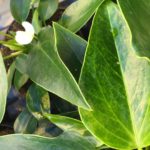
Thrips science in Anthurium and Phalaenopsis
Found in:25 March 2019
In this article, we want to draw attention to the different types of thrips that occur. The aim is to get to know this enemy better and to be able to react quicker and more effectively.

The influence of pH on cultivation
Found in:8 November 2018
In addition to carefully monitoring the nutrients and EC fed to the plants, we also pay a lot of attention to the pH of the feed water. Why do we do this? Why is the pH so important, and what is its influence on the plant?
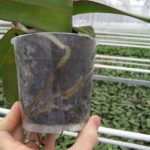
Pythium
Found in:23 March 2018
In the cultivation of Anthurium and Phalaenopsis, several fungi and bacteria can cause damage to the crop and subsequent plant failure. In this article, we are focusing on the fungus Pythium (root rot).

Plant activity for good plant health and growth
Found in:13 October 2017
Before we can talk about plant activity, it is a good idea to explain what this means exactly. It sometimes seems to be a bit of a buzzword: the plants and the climate must be ‘active’.
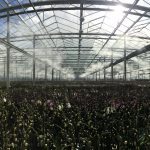
Humidity in the cultivation of Phalaenopsis
Found in:2 June 2017
Each company deals differently with humidity. In addition to the advantage of higher humidity for the photosynthesis process, more advantages can be mentioned that apply specifically to Phalaenopsis.
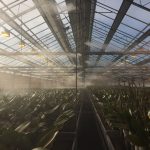
Humidity in cultivation
Found in:2 June 2017
Good humidity is of great importance for the Anthurium and Phalaenopsis plant.
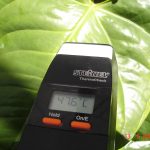
Measurement is the key to knowledge
Found in:16 February 2017
The cultivation of crops in the greenhouse horticulture sector requires optimal control of the greenhouse climate.
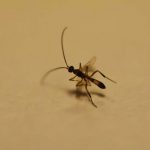
Developments in pot worm control
Found in:22 November 2016
The pot worm has been present for many years in the Phalaenopsis cultivation. With many Phalaenopsis and other orchid growers, the population of mosquitoes and larvae in the crop (greenhouse and substrate) has become quite substantial in some cases.
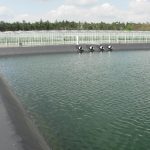
Healthy water as a basis for healthy cultivation
Found in:17 October 2016
Healthy irrigation water is of vital importance for healthy cultivation and a sound business. Fungal or bacterial infection in the plant, growth stagnation or impaired root growth is increasingly linked to irrigation with unhealthy (contaminated) water.

Young plants in plug trays: tips and suggestions for successful cultivation in 12 cm pots
Found in:8 September 2016
Since last year, these amounts in plug trays have increased substantially and it is expected that in the near future all young Phalaenopsis plants will be grown in plug trays.

Root problems
Found in:2 August 2016
Healthy roots are the basis of a healthy plant. It is of the utmost importance to ensure that the root system stays healthy.

Cooling in Phalaenopsis
Found in:31 May 2016
Phalaenopsis plants need the cold to switch from the vegetative (growth) to the generative (flowering) phase. In terms of plants, we speak of vernalisation.
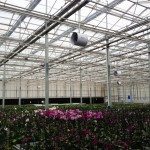
Climate
Found in:24 March 2016
The greenhouse climate is one of the main (if not the main) growth factor for the plant. Therefore, it is worth optimizing the greenhouse climate to further enhance production.

Hygiene in Anthurium and Phalaenopsis cultivation
Found in:29 February 2016
In the cultivation of Phalaenopsis and Anthurium there are several diseases for which a high hygiëne level is of great importance for prevention. There are several sources of infection and hygiëne measures which are explained in this article.

The purpose of chalking
Found in:7 December 2015
When you consider chalking, it is important to determine which goals you want to achieve, such as: – avoiding an excessive greenhouse temperature; – avoiding the entrance of too much light (caused by insufficient sun shading); – preventing uneven light distribution, the so-called ‘light strips’. Greenhouse temperature Temperature peaks occur due to a lack of […]

Screen selection and chalking
Found in:7 December 2015
During Anthurium and Phalaenopsis cultivation, one to three screens are mainly used. The number of screens depends on the location of the nursery and the type of greenhouse.
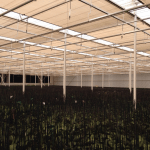
Screen selection
Found in:7 December 2015
Fire safety requirements for companies are becoming more and more stringent. This also applies to screens. In the coming years, several screens will need to be replaced in the Netherlands to comply with the new fire safety regulations by 2017.

New emerging pot sizes
Found in:7 December 2015
Several years ago, the 15 cm pot (Ø) emerged in addition to the familiar 12 cm size. At present, though, the smaller pot sizes like the 9 cm pot (Ø) and the 6 cm pot (Ø) are becoming more popular.
